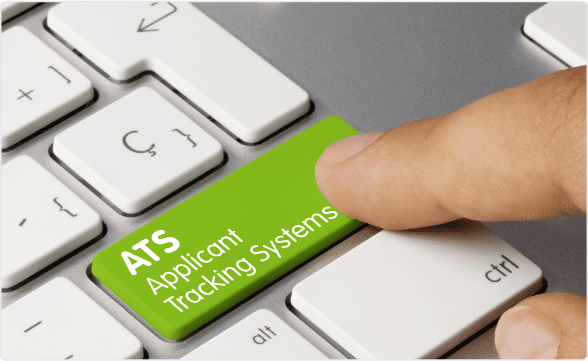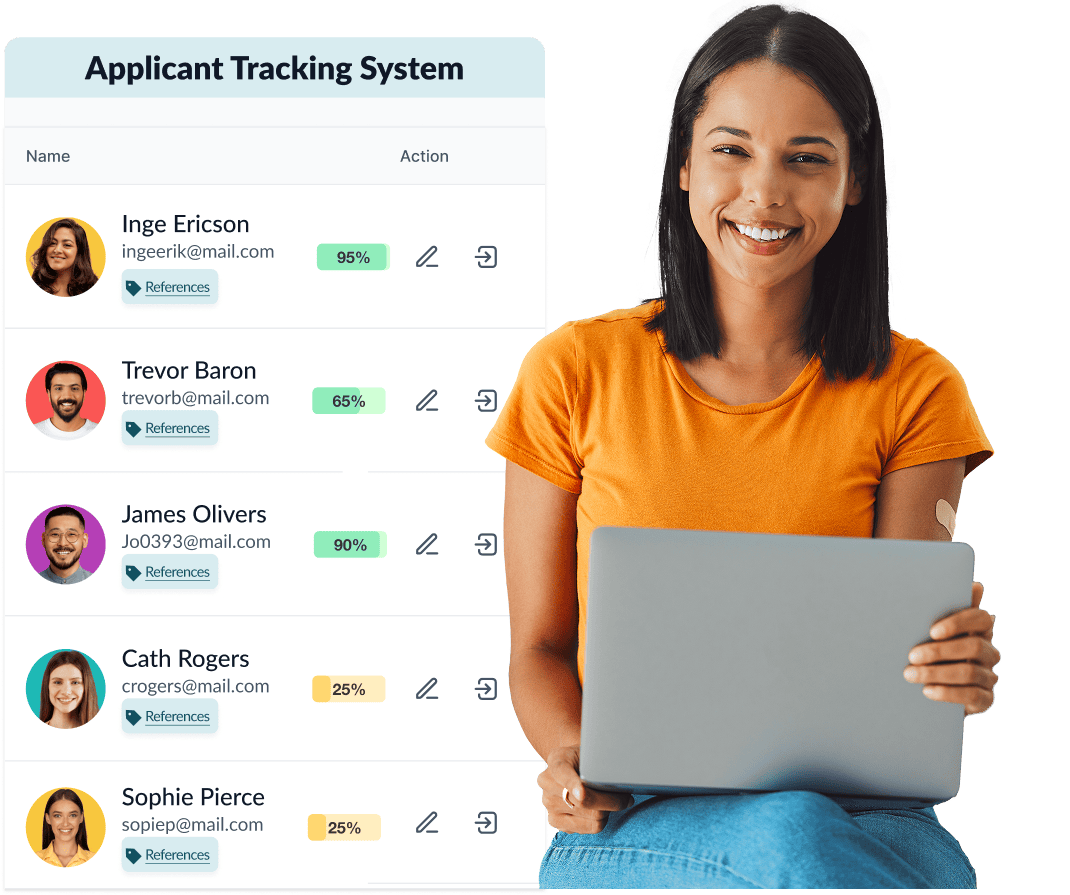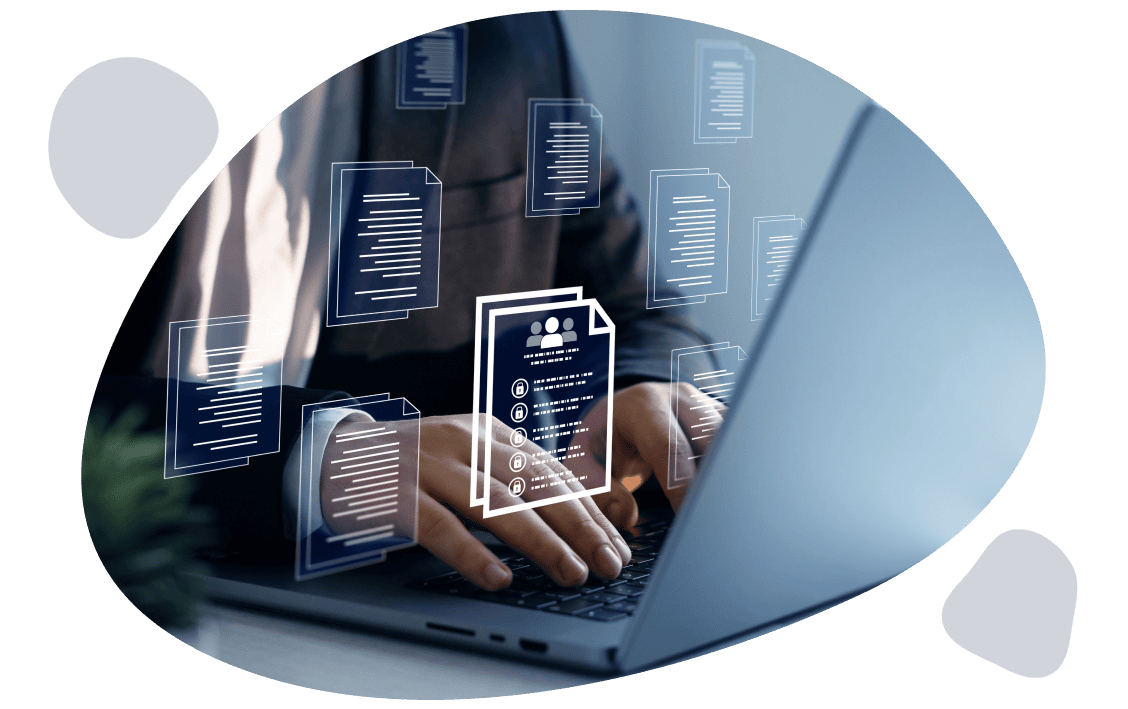
Types of ATS
Explore the different types of applicant tracking systems available, each tailored to fit the needs of small businesses to large enterprises.

Most medium- and large-sized organizations use an applicant tracking system (ATS), a human resource information system (HRIS), or both for recruitment. What’s the difference between these solutions? And in which situations do you need to use one over the other?
An ATS and an HRIS are both essential tools for managing different aspects of the employee lifecycle. While an ATS focuses on simplifying the hiring process by tracking job applicants and resumes, an HRIS is a broader platform that helps streamline various HR functions, including employee data, payroll, benefits, and performance management.
Recent hiring stats show that the average time-to-hire for open positions currently sits at around 44 days across all industries (SHRM, 2024). With recruitment automation on the rise with both ATS and HRIS technology, HR teams can expect to see even shorter timelines to secure the best talent for their organization, faster.

These systems are used at different stages of the candidate-employee journey and manage different data sets.
Collect, store, and manage candidate data like employment history, testing scores, interview ratings, notes from interviewers, and references
Enable recruitment automation, which streamlines administrative tasks like scheduling interviews and pre-screening candidates
Facilitate team collaboration and coordinate hiring decisions
Enhance the candidate experience, especially if they include relationship management features for nurturing talent
Plug in to hiring tools like interview software
Support onboarding by automating new hire tasks and reference checks

Collect, store, and manage employee data like position, salary, vacation requests, and emergency contacts
Streamline employee training and development, absence management, and performance measurement
Facilitate internal development and workforce planning decisions by storing all employee information in one place
Monitor ongoing compliance with regulatory changes
Provide a positive employee experience by making it easier to enroll in health benefits through self-service functions
Support onboarding by conducting background checks and providing new hires with self-service features to reduce paperwork

One of the key differences between these two systems is that most HRIS focus on managing personnel rather than talent acquisition. In a competitive market where the employee-employer relationship dynamic has shifted in recent years, talent attraction strategies have become increasingly vital.
An applicant tracking system is designed with candidate sourcing and nurturing in mind. It offers features that can help employers efficiently and effectively source new talent:
Custom careers page
Tailor branding, messaging, and even IP detection to attract applicants
Job board integration
Post to and manage multiple job boards at the same time
Saved talent pools
Searchable talent pools, including past applicants who may have relevant skills
Passive candidate sourcing
Email and social campaigns to engage candidates with hard-to-find skill sets
When determining which job boards to market on, consider the alignment between the job board’s audience demographic and the position you are looking to fill. Also consider the boards’ geographical reach, cost, and additional features offered. One-click apply is increasingly appealing to applicants for hourly positions.
As part of talent acquisition strategies, a strong referral program can help increase candidate and brand alignment, boost retention rates, and improve the overall quality of hires.
For hourly industries, employee referrals help boost top-of-funnel applications and reduce time-to-hire by providing an ongoing roster of new candidates.
An applicant tracking system offers advantages over an HRIS in creating a referral program:

Getting new hires up and running quickly is paramount in a hybrid and remote work landscape. Are they set up with all of the technology and applications needed for their role? The average company spends $3,000 onboarding a new employee. Consider this a good investment because up to 90% of new hires decide whether they will stay or leave a new position within six months.
What’s the difference between these two systems during set-up? An HRIS can help employers set new hires up for success. It can also facilitate background checks and payroll enrollment.
What about the onboarding experience? Self-service features in an HRIS give new hires a streamlined, paperless experience when onboarding. One limitation with an HRIS is that they don’t always offer communication features to stay in touch with new hires before their start date. For example, welcome communications and packages.
An applicant tracking system creates a consistent hiring process through automated workflows. Some system vendors also offer structured interviewing as a plug-in. This helps employers create a standardized, repeatable process, which can help support fair hiring practices.
Some systems can be customized to support your ideal hiring processes that promote inclusive hiring across all departments. For example, system workflows can be tailored to facilitate panel reviews of an applicant’s resume and pre-recorded interview responses, enabling feedback to be gathered from multiple perspectives.
The difference between an ATS and HRIS during post-hire is that an HRIS creates consistency around training, performance and promotional opportunities, and new hire set-up. For example, companies can standardize HRIS self-service features for new hires.
There are many types of ATS options. Cloud-based ATS platforms offer comprehensive features for candidate management and team collaboration. Meanwhile, simpler, user-friendly ATS options are available for small to mid-sized organizations, and often focus on essential features like job posting, resume screening, and interview scheduling.
Yes, many modern HRIS systems include an ATS as part of a set of tools. In such cases, the HRIS provides a more integrated solution, handling recruitment through the ATS, and then continuing to manage employee data post-hire.
In integrated systems, yes they can share data. For example, once a candidate is hired through an ATS, their data can flow directly into the HRIS for ongoing employee management tasks such as payroll, benefits, and training.
An HRIS can help support employee retention by tracking performance, providing access to training, managing career development and employee benefits. It also helps with compliance, making employees feel secure and valued.
Modernize your hiring process with expert insights and advice.